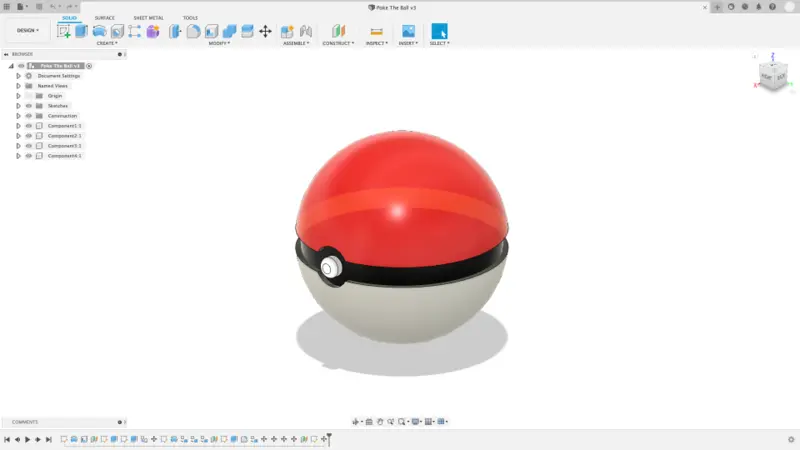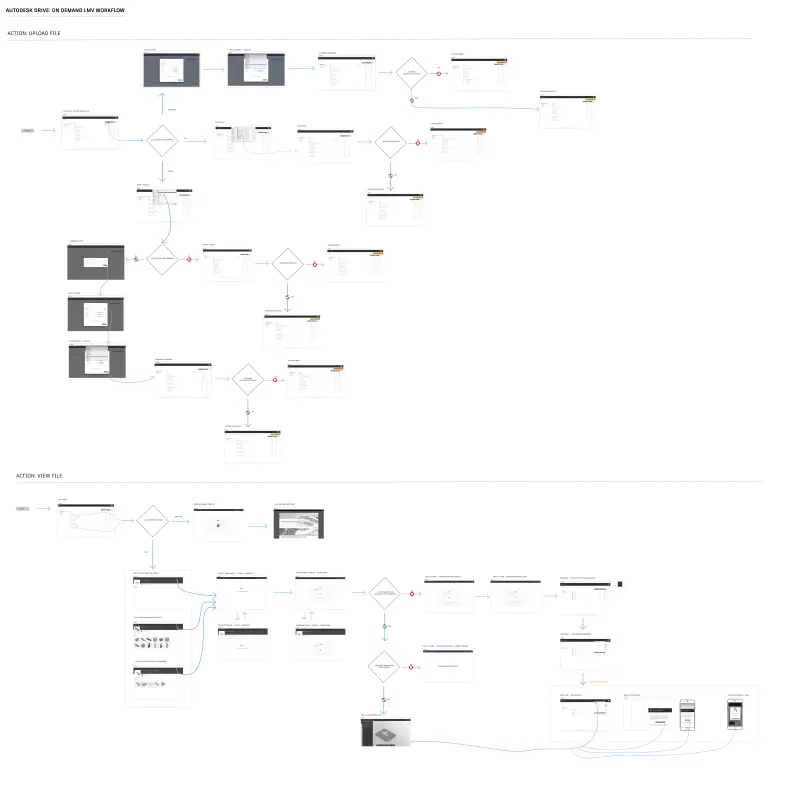Fusion 360
UX Portfolio
CAD/CAM Product Design Application
Autodesk Fusion 360
Enterprise UX at Scale
The Enterprise Context
Autodesk Fusion 360: a cloud-based 3D modeling platform used by engineers, designers, and manufacturers worldwide. Powerful software serving a massive user base within the complex ecosystem of a global enterprise.
My role as Senior UX Designer involved navigating the realities of large-scale software development - coordinating across distributed teams, working within established processes, and delivering meaningful improvements to professional-grade CAD software.

Enterprise Process Realities
Autodesk operated with the structures and processes typical of large software companies - extensive coordination requirements, multiple stakeholder layers, and formal development methodologies.
Working within the system:
- Coordinated design decisions across teams in Singapore, Shanghai, Portland, Detroit, and Hyderabad
- Participated in structured sprint planning and review cycles
- Collaborated with product management to translate business requirements into user experience improvements
- Adapted design processes to work within established enterprise development workflows
The challenge was delivering user value while working effectively within these organizational realities.
Global Team Coordination
Fusion 360's UX team spanned multiple continents, requiring careful coordination to maintain design consistency and effective collaboration.
Coordination challenges:
- Synchronized design reviews across four time zones
- Maintained version control and design consistency across distributed teams
- Facilitated communication between different cultural approaches to design process
- Created comprehensive handoff documentation to bridge geographic gaps
Success required developing strong project management skills alongside design expertise.
Working with Existing Research
Autodesk maintained a dedicated user research team that conducted comprehensive studies across their user base. My role involved translating research findings into actionable design decisions for the Fusion 360 platform.
Research integration process:
- Analyzed user research findings delivered through formal presentations and documentation
- Extracted design insights from comprehensive user studies conducted by the research team
- Collaborated with product management to prioritize user needs against business requirements
- Developed design solutions based on synthesized user insights and technical constraints
This approach required strong analytical skills to work effectively with research data rather than conducting primary user research myself.
Stakeholder Collaboration
Product management at Autodesk operated within complex organizational structures, balancing user needs against technical constraints and business objectives. Effective collaboration required understanding these competing priorities.
Cross-functional dynamics:
- Worked with product managers to translate user requirements into feasible design solutions
- Navigated situations where user needs conflicted with technical or business constraints
- Developed design proposals that addressed multiple stakeholder perspectives
- Built consensus around design decisions through clear communication and documentation
Success required diplomatic skills and the ability to find creative solutions within established parameters.
Design in the Context of Constraints
Fusion 360 serves engineers designing medical devices, aerospace components, and consumer products. These aren't casual users - they're professionals whose work has life-and-death implications.
Real design constraints:
- Features couldn't be "simplified" if it compromised precision
- Interface changes had to accommodate users with 10+ years of CAD muscle memory
- New functionality had to integrate with existing workflows rather than replacing them
- Performance mattered more than visual polish
I created wireframes, user flows, and prototypes, but always within the context of what could actually ship given technical, business, and organizational constraints.



The Artifacts of Enterprise Design
My deliverables looked professional: comprehensive sitemaps, detailed user flows, pixel-perfect wireframes, interactive prototypes built in Sketch and Adobe Illustrator.
But the real work happened in the spaces between those artifacts:
- Translating research insights into actionable design decisions
- Mediating disagreements between global team members
- Advocating for user needs against competing business priorities
- Finding creative solutions within rigid technical constraints
What Actually Shipped
Despite the organizational chaos, we did ship improvements to Fusion 360. Small ones, mostly, but meaningful to the engineers and designers who used the software daily.
Incremental victories:
- Streamlined toolbars that reduced cognitive load
- Improved onboarding flows for new users
- Better integration between modeling and simulation workflows
- More consistent interaction patterns across different feature areas
Not revolutionary, but valuable to users who spend 8+ hours a day in CAD software.
Enterprise Skills Development
Working at Autodesk provided valuable experience in enterprise UX practices that differ significantly from startup or agency environments.
Key competencies developed:
- Stakeholder management across complex organizational hierarchies
- Design decision-making with filtered user research and multiple constraints
- Cross-cultural collaboration in distributed team environments
- Advocacy for user needs within business-driven development cycles
These skills proved essential for delivering user value within the realities of large-scale software development.
The Enterprise Design Contribution
Fusion 360 served professional users who needed reliable, precise tools for critical work. The design approach focused on thoughtful evolution rather than dramatic transformation, respecting established user workflows while identifying opportunities for improvement.
Working within enterprise constraints taught valuable lessons about how design functions in complex organizational environments, where success often comes from navigating multiple competing priorities while maintaining focus on user value.